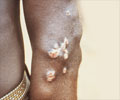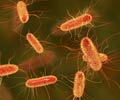
But in recent decades, disease seems to have taken a more prominent role in causing mortality. Because of multiple stresses, many induced by humans, amphibians now succumb to diseases they may historically have been better able to resist or tolerate.
"There’s more and more evidence of the role of disease in the biodiversity crisis, in both amphibians and other types of animals," said Andrew Blaustein, a distinguished professor of zoology at Oregon State University and author of the recent analysis.
"It’s normal for animals to deal with infectious organisms, often many of them simultaneously. But in the face of pollution, a reduced immune response, climate change, evolving pathogens and many other stresses in such a short period of time, many species now simply can’t survive," he said.
The current extinction rates of amphibians - which existed even before dinosaurs roamed the Earth - may be more than 200 times the background rate of extinction, the scientists note in this report. From an evolutionary perspective, amphibians that survived for hundreds of millions of years may be undergoing a major extinction event.
Because they have both terrestrial and aquatic life stages amphibians are exposed to various environmental forces more than some other animals, scientists say, and a higher percentage of them are threatened with extinction than are birds or mammals. However, similar concerns may become apparent in many animal species, including humans, as environmental changes and stresses grow, they said.
Advertisement
The in a review published in Philosophical Transactions of the Royal Society B.
Advertisement















